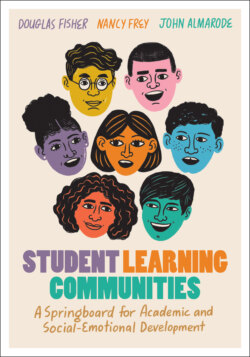Читать книгу Student Learning Communities - Нэнси Фрей - Страница 17
На сайте Литреса книга снята с продажи.
Focused Instruction
ОглавлениеThe teacher's first task is to establish the purpose of instruction in students' minds as clearly and coherently as possible. Students must grasp why they should engage with the lesson and how they will be expected to use the information they'll encounter to accurately perform the tasks they will be given. Additionally, a coherent statement of purpose helps students access their background knowledge of learned concepts in order to build schema to support the newly introduced concepts. In other words, we go from the known to the new. Presenting students with clear learning intentions and success criteria signals to them what they will be learning and how they will know they have learned it (Fisher, Frey, & Hattie, 2016). When the purpose is not clear, students may complete a number of tasks and not assume any responsibility for their own learning. In the students' minds, it's "I'm doing this because I was told to, not because it matters to me."
We have found this to be even more important in distance learning. The practice we now recommend is to include learning intentions and success criteria at the beginning of every online lesson. However, these are not useful if they are passively read by students. To engage in active learning, students self-assess their knowledge and skills at the beginning and end of the lesson and submit it using the polling feature on the learning management system. Think of these tasks as entrance and exit tickets. They provide the online teacher and all the other students with an understanding of the needs of the group and how their learning is evolving.
During focused instruction, teachers model the behaviors, skills, and strategies they expect to see from their students. This modeling is based on the established purpose and provides students a mental example they can call upon when they are asked to complete tasks in another phase of instruction. Questioning can be a feature of this instructional phase, but its point is primarily to activate students' background knowledge. For example, a 10th grade biology teacher might ask students to talk about cell life with their table partners before explaining cell division to them. During focused instruction, teachers also model the use of academic language by engaging in think-alouds, shared readings, read-alouds, lectures, and other whole-class events. After modeling, students can reflect on what they learned through both writing independently and talking with a partner. Exchanges where teachers model a wide range of strategies and students participate as partners help students to internalize the interactive format along with the new information. Over time, students will develop the ability to perform these tasks independently; these early-phase exchanges provide them with time to practice in supportive situations that encourage them to use language to own and share their thoughts and developing understanding.
